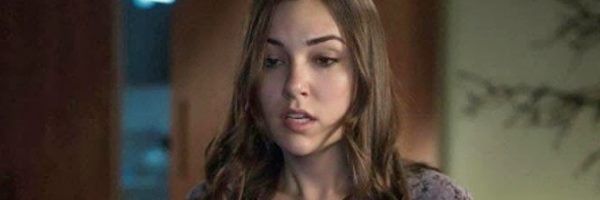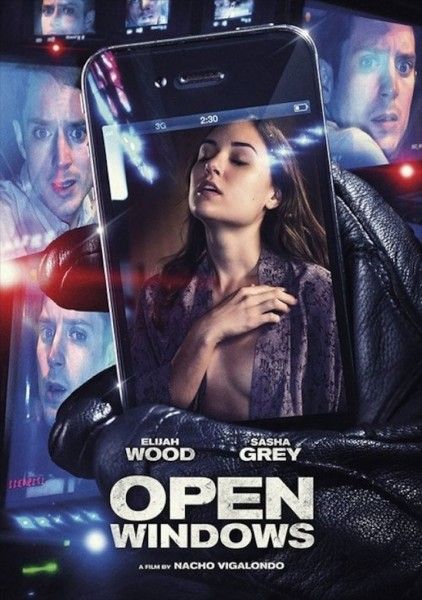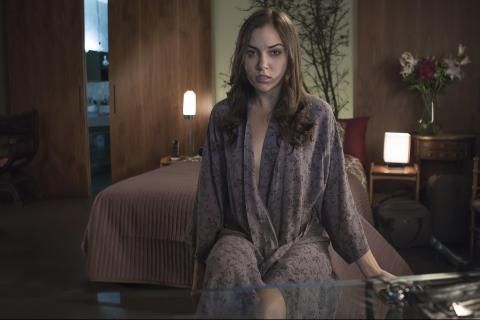You know when you’ve got so many windows open on your computer that you hit the point where you can’t keep track of them all, forget some are open and also why you opened them in the first place? The same thing happens with the laptop point of view movie Open Windows. Hit the jump for my full review of Open Windows from the SXSW Film Festival.
Elijah Wood leads as Nick Chambers, the man behind JillGoddard-Caught.com, a website dedicated to providing you with an endless stream of photos of one of the hottest stars out there, actress Jill Goddard (Sasha Grey). Under the impression that he’s won a fan contest and will get to have dinner with Jill, Nick flies to Austin where she’s promoting her latest movie and preps for his big night out. Trouble is, before he can even leave the hotel, he receives a web-based call from someone named Chord (Neil Maskell) who explains that his dinner date with Jill has been canceled simply because she just doesn’t feel like going anymore. In an effort to boost Nick’s spirits, Chord gives him a new opportunity. If Jill won’t meet with him, he should still be able to see her so Chord gives Nick the tools to spy on Jill via a personal video camera, security cameras, her own cell phone and more.
The synopsis on Open Windows' SXSW website calls the film, “The 21st century Rear Window.” Now that sounds like a great movie, but unfortunately, Open Windows doesn’t earn the title.
First off, this is a tough format to get used to. Every little bit of action unfolds on Nick’s laptop screen, which is consumed by a number of open windows. You can see a shot of Nick through the video call he’s having with Chord, one of Jill walking around a hotel room via the camcorder Nick has peering out his window, more of Jill from her cell phone camera and the list goes on and on. There are an abundance of vantage points that do offer a comprehensive representation of what’s happening, but the problem is, as presented here, navigating around someone’s laptop screen just doesn’t feel natural.
Open Windows is clearly quite the undertaking so kudos to director Nacho Vigalondo and his team for taking on that challenge and making it work as well as they did, but they’re missing one key element that’s vital to the suspense of the scenario - a connection to the characters. Because of this unusual shooting style, Nick doesn’t feel real. Wood delivers an exceptional performance, per usual, but the camera movements (or rather digital movements) around the computer screen don’t feel like they’re motivated by his character and that gives the experience an offputtingly odd feel.
Grey even shows a marked improvement in her work here. There’s still some noticeable stiffness to her performance, but she does manage to sell the role and even deliver a number of scenes with an impressive dose of honest emotion. But unfortunately, the convoluted narrative drags the character way, way down. Jill’s got issues, and a lot of them, too. She’s got diva tendencies, is fed-up with the celebrity lifestyle, is no longer interested in her boyfriend/co-star, has a thing for her agent and wants to retire. It’s impossible to sympathize with her when she’s got so many thinly presented predicaments. Nick, however, is much easier to track in that respect, but then the trouble is, with him, any access you do get to the character is subverted time and time again because Open Windows is plagued by plot twist after plot twist.
I’m far from an expert, but would consider myself an above average computer user. But even then, the series of events in Open Windows is dizzying. The multitude of viewpoints is necessary to tell all sides of this story, but sliding up, down and sideways time and time again makes it impossible to get your bearings. And then the logic behind it all just doesn’t make much sense either. Even before we get into spoiler territory, there are an abundance of questions that arise pertaining to some of the most basic plot points in the film.
In fact, the first step of this whole process doesn’t really add up. Nick suddenly gets an e-mail from the contest folks directing him to record a greeting video and the thing is a perfect example of an e-mail that should never be opened. It’s formatted like every spam message you’ve ever received in your life and even comes with the line, “PLEASE, CLICK HERE.” What idiot would actually click here? Then, down the line, it’s revealed that Nick’s room is on the seventh floor of his hotel yet we can hear Jill talking from street level loud and clear. Later on, Nick spends a good portion of the film following driving directions on his laptop screen while the thing is sitting in the passenger seat – because that’s possible.
On the tech front, Open Windows does manage to get away with certain unreasonable scenarios. I’ll buy that Chord takes over the hotel’s phone system and that he can open a room door remotely, but I can’t help but to wonder how he’s maintaining a connection with Nick while he’s in the hotel’s basement parking lot and then driving around the city. There are loads of plot points from there that will have you questioning characters’ intelligence and motivation, and even though those question are somewhat answered in the end, the fact that they’re not earlier on completely undercuts the large majority of the experience. Without revealing any key details, it’s this vicious cycle of constantly wondering why someone would let a certain something happen and then only being allowed to understand the answer after the big reveal at the end, and a rather unsatisfying one at that.
And even though the movie does provide an explanation for just about every plot point, the large majority is rendered meaningless because there’s far too many to keep track of. The abundance of story details, twists, turns and then new plot points sucks the life out of the experience. You’re trying so hard to keep track of the details and the vantage points that by the time everything does come together, you’re too exhausted to care.
Vigalondo has something here. This found footage 2.0 shooting style is a natural progression for the technique and offers a wealth of innovative opportunities. It’s glaringly obvious that Vigalondo put his best foot forward and stitched together each element of the experience with the utmost care. But even then, the storytelling format of Open Windows still feels too unnatural and then that is just exacerbated because the narrative is too confusing, hollow and totally forgettable.
Grade: C-
Click here for all of our SXSW 2014 coverage. Click on the links below for my other reviews:



